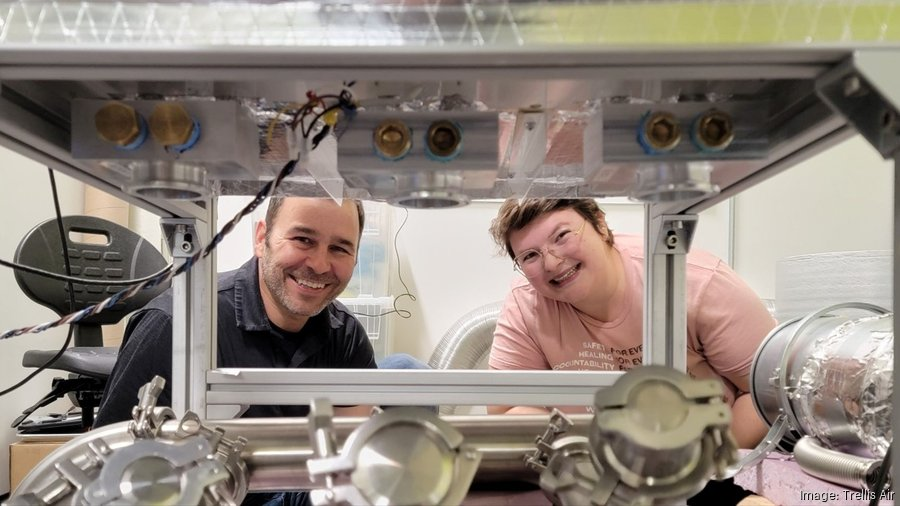
Benjamin Franklin Stove: An Unintentional Invention
The Benjamin Franklin stove is a remarkable invention by one of America’s founding fathers that revolutionized heating in the 18th century. This innovative stove, designed to improve household warmth while minimizing wood usage, exemplifies Franklin’s contributions to early American science and technology. Historian Joyce Chaplin’s exploration of this invention in her latest book sheds light on how climate adaptation efforts during the colder winters of Franklin’s lifetime spurred advancements in weather technology. As we reflect on Franklin’s enduring impact, his stove emerges not just as a means to generate warmth but as a reflection of his broader vision for environmental comfort. Through this lens, we gain insight into Franklin’s legacy and the intersection of science and everyday life in early America, marking a significant chapter in his array of Franklin inventions and insights into the natural world.
Often referred to as the Pennsylvania fireplace, the Benjamin Franklin stove represents a critical step forward in home heating technology. This ingenious creation allowed colonists to efficiently heat their homes while addressing immediate societal challenges such as fuel scarcity during harsh winters. Joyce Chaplin’s scholarship on this device highlights its significance within the context of early American development, particularly how it fostered understanding of atmospheric dynamics. Beyond mere functionality, the stove serves as a symbol of humanity’s endeavor to harness technology in adapting to environmental challenges. Franklin’s work, which also links to themes of climate science, showcases how inventions can reshape lives and contribute to a more comfortable existence during tumultuous weather patterns.
The Franklin Stove: A Revolutionary Invention
The Franklin stove, invented by Benjamin Franklin during the harsh winter of 1740-1741, marked a significant milestone in early American innovation. As depicted in Joyce Chaplin’s book, this remarkable stove was not just about warmth but also about climate adaptation. While many recognize Franklin for his lightning rod or bifocals, the stove serves as a testament to his foresight in energy efficiency. Designed to optimize heating, it allowed colonists to use less wood while keeping their homes warmer, thus addressing the escalating issue of resource scarcity as settlements expanded.
Beyond just a functional device, the Franklin stove epitomizes the intersection of science and daily life during the 18th century. Franklin’s innovations in furnace design reflect his broader contributions to early American science and technology. By understanding the principles of convection, he sought to replicate outdoor atmospheric phenomena indoors, demonstrating how science could indeed enhance comfort and practicality in an age where heating was a critical concern.
Climate Adaptation in Early American Society
In the rapidly changing climate of the 18th century, Benjamin Franklin’s stove was more than a simple invention; it symbolized the adaptation strategies of early American society. The extreme winters of the Little Ice Age posed a real threat to survival, compelling Franklin and others to innovate solutions that would mitigate the harsh realities of their environment. As Joyce Chaplin elucidates, these innovations were born out of necessity, highlighting how early Americans utilized their understanding of weather and technology to improve their living conditions.
Franklin’s stove initiative was not solely about comfort—it also represented a strategic approach to resource management. His awareness of deforestation and rising fuel costs prompted him to develop an energy-efficient heating solution that could potentially alleviate the burdens faced by poorer settlers. This forward-thinking mindset is crucial to understanding how early American science laid the groundwork for future climate adaptations still relevant today.
Impact on Weather and Atmospheric Understanding
The invention of the Franklin stove significantly impacted contemporary understanding of weather and atmospheric science. Because Franklin based his heating design on the principles of convection and the behavior of warm air, he also used these concepts to explain larger atmospheric phenomena. Through his writings, he articulated how air movements contributed to weather patterns, paving the way for future scientific exploration in fields such as meteorology and climatology. His work illustrated that the principles governing indoor heating could be applied to outdoor atmospheric behaviors.
Moreover, Franklin’s exploration of heat dynamics provided vital insights into natural systems, including the Gulf Stream. By drawing parallels between the mechanics of his stove and atmospheric movements, Franklin helped demystify complex interactions of weather systems, capturing the imagination of a generation eager to explore the science of their environment. His stove represents not just an engineering feat but a catalyst for advancing 18th-century thought on climate and technology.
The Interplay of Invention and Morality
Despite his remarkable inventions, Benjamin Franklin navigated a complex moral landscape, particularly regarding slavery. Joyce Chaplin’s exploration of Franklin’s life reveals troubling aspects of his legacy, particularly his connection to the iron industry in Pennsylvania and the labor of enslaved individuals. Notably, the production of the Franklin stove was intertwined with these historical realities, indicating a pervasive system of exploitation even as Franklin sought to improve life through his inventions.
This darker facet of Franklin’s legacy prompts important discussions about the ethical implications of technological advancement. It raises critical questions about the sources of innovation and the societal structures that support them. Acknowledging these historical realities enhances our understanding of not only Franklin’s contributions but also the broader context of early American science, which was often built upon inequitable foundations.
Joyce Chaplin’s Insightful Analysis
Joyce Chaplin’s latest work, “The Franklin Stove: An Unintended American Revolution,” provides a profound analysis of Franklin’s contributions to science and technology. By delving deep into the context surrounding the stove’s invention, Chaplin sheds light on how Franklin’s innovative spirit reflects the collective aspirations of a society grappling with environmental challenges. The stove serves as both a physical object and a symbol of the human desire to harness nature through science.
Chaplin’s exploration highlights how Franklin’s methods resonate with contemporary discussions on climate change and technological solutions. Her contextualization of the stove as a response to seasonal hardships connects historical narratives to modern challenges, emphasizing the role of invention in shaping our adaptive strategies in the face of climate uncertainty. This alignment serves as a reminder that innovation must always consider ethical considerations and the socio-political landscape.
The Franklin Stove’s Relevance Today
The relevance of the Franklin stove extends far beyond the 18th century; it speaks to our ongoing relationship with technology in the face of climate change. Chaplin’s insights underscore how Franklin’s desire to improve indoor comfort through efficient heating can inform today’s efforts to create sustainable technologies. As we face growing environmental crises, the principles underpinning Franklin’s work encourage a reevaluation of how we approach energy consumption and resource management.
Furthermore, the evolution of the Franklin stove symbolizes not just technological progress but the need for an integrated approach to problem-solving in our contemporary climate challenges. As we look for solutions to mitigate emissions, Franklin’s innovative methods offer valuable lessons. It urges us to consider multiple avenues in combating climate issues rather than relying on singular, simplistic fixes, echoing Franklin’s multifaceted contributions to early American science.
Navigating the Ethical Landscape of Invention
As we assess historical figures like Benjamin Franklin, it becomes imperative to navigate the ethical landscape that underpins their innovations. Franklin’s relationship with slavery and the exploitation of marginalized groups starkly contrasts the heroic narrative of his scientific achievements. Investigating these complexities is critical in understanding the full scope of innovation during the period while prompting dialogue about equity in contemporary inventiveness.
Reflecting on Franklin’s contributions alongside the moral complexities reveals how scientists and inventors can inadvertently perpetuate inequities. Today’s innovators must grapple with the consequences of their work, ensuring that technology serves the greater good without overshadowing the ethical considerations of its development. Such reflection can foster a more inclusive and responsible culture of innovation.
Franklin’s Legacy in Science and Technology
Benjamin Franklin’s legacy in science and technology is multifaceted and enduring. His inventions, particularly the Franklin stove, embody a spirit of inquiry and a commitment to enhancing human life through practical solutions. As a founding figure in early American science, Franklin’s efforts to merge scientific understanding with everyday challenges continue to influence how we approach technological advancements today.
Moreover, Franklin’s willingness to question societal norms and his advocacy for employing science to solve pressing issues showcase a visionary mindset crucial for contemporary innovators. As we consider future challenges related to climate change and resource sustainability, Franklin’s philosophy of using science to understand and improve our environment serves as a guiding principle for modern inventors and policymakers alike.
Exploring Atmospheric Science Through the Franklin Stove
The Franklin stove serves not only as a household invention but also as a cornerstone of atmospheric science during the early American era. Franklin’s integrative approach allowed him to draw connections between the physical principles of his stove and broader environmental phenomena. His insights laid the groundwork for future studies in meteorology by framing heating principles as part of understanding outdoor atmospheric conditions.
Through the lens of Franklin’s work, we see the importance of interdisciplinary thinking in science. By applying the mechanics of the stove to explain weather patterns, Franklin demonstrated how practical inventions could fuel intellectual curiosity and scientific understanding. Today, as we face increasingly complex environmental issues, such integrative approaches remain vital for developing comprehensive solutions.
Frequently Asked Questions
What is the significance of the Benjamin Franklin stove in early American science?
The Benjamin Franklin stove represents a pivotal advancement in early American science as it showcased Franklin’s innovative approach to heat and climate adaptation. By designing a more efficient heating system, Franklin contributed to the understanding of atmospheric phenomena, highlighting the relationship between temperature, air circulation, and comfort during harsh winters.
How did the Franklin stove reflect Benjamin Franklin’s views on climate adaptation?
The Franklin stove is a prime example of Benjamin Franklin’s commitment to climate adaptation. Developed during the brutal winters of 1740-1741, it was designed to improve heating efficiency, allowing households to burn less wood while keeping rooms warmer, thus addressing the environmental challenges posed by deforestation and fuel scarcity.
In what ways did the Franklin stove influence weather and technology discussions?
Franklin’s stove influenced discussions on weather and technology by introducing the principles of convection to a broader audience. His design demonstrated how heated air could efficiently warm indoor spaces, paralleling his investigations into how atmospheric conditions, such as storm behavior and the Gulf Stream, operate outdoors.
What role did the Benjamin Franklin stove play in advancing energy efficiency?
The Benjamin Franklin stove played a crucial role in advancing energy efficiency through its innovative design that aimed to reduce smoke emissions and maximize heat output. Franklin’s commitment to improving air quality and minimizing resource waste reflected early concerns about pollution and energy utilization.
How does Joyce Chaplin’s book connect the Franklin stove to modern climate discussions?
Joyce Chaplin’s book connects the Franklin stove to modern climate discussions by illustrating how Franklin’s invention reflects ongoing challenges with emissions and resource consumption. Her exploration of Franklin’s approaches encourages contemporary readers to consider multifaceted solutions to today’s climate crisis rather than seeking single, quick fixes.
What are some of the lesser-known inventions of Benjamin Franklin besides the stove?
Besides the Franklin stove, lesser-known inventions by Benjamin Franklin include bifocals, the lightning rod, and swimming fins. Each of these innovations, while not as famous as his almanacs, showcase his diverse contributions to early American science and practical technology.
What can we learn from Franklin’s efforts to minimize emissions from his stove?
Franklin’s efforts to minimize emissions from his stove reveal foresight into air quality issues that have become critical today. His designs were intended to burn smoke more efficiently, suggesting an early recognition of the importance of reducing pollution — a lesson relevant to modern environmental advocacy and engineering.
Why is the Franklin stove considered an unintended American revolution?
The Franklin stove is considered an unintended American revolution because it catalyzed a shift in the public’s understanding of heating technology and its impact on daily life. By improving indoor comfort during severe winters, Franklin’s invention influenced broader societal attitudes toward innovation, energy use, and the relationship between humans and their environment.
| Key Points |
|---|
| Joyce Chaplin’s book explores Benjamin Franklin’s invention of the stove, which improved heating efficiency. |
| The stove was developed during the harsh winter of 1740-41, enabling colonists to adapt to climate conditions. |
| Franklin designed the stove to burn less wood while providing more heat, addressing resource scarcity. |
| The invention contributed to understanding of atmospheric phenomena, like the Gulf Stream. |
| Franklin iterated the design over several decades, moving from wood to coal to fuel the stove. |
| The book discusses parallels between Franklin’s era and modern climate challenges. |
| Chaplin uncovers historical ties between Franklin’s inventions and slavery, emphasizing societal impacts. |
| Franklin aimed to minimize emissions, demonstrating an early concern for air quality. |
| The book warns against relying on singular solutions for climate issues, advocating for a multifaceted approach. |
Summary
The Benjamin Franklin stove, as explored in Joyce Chaplin’s book, reveals how one modest invention significantly shaped technological innovation and environmental understanding during the 18th century. By enhancing heating efficiency and sparking new ideas about air circulation and weather, Franklin’s stove transcends its role as a simple heating device, inspiring future generations to tackle climate challenges with similar ingenuity.









